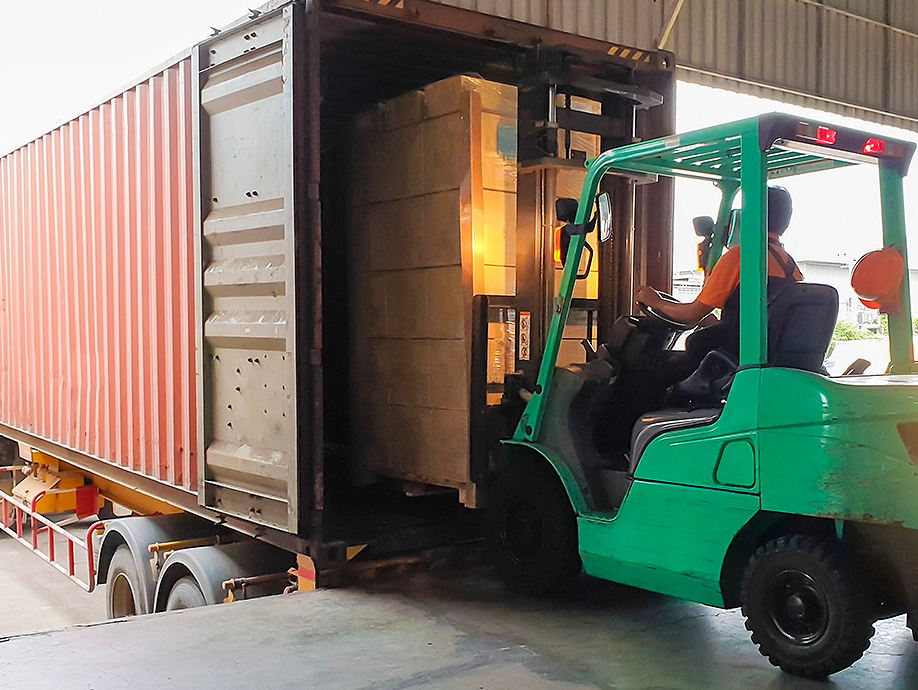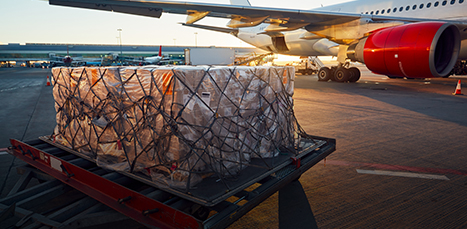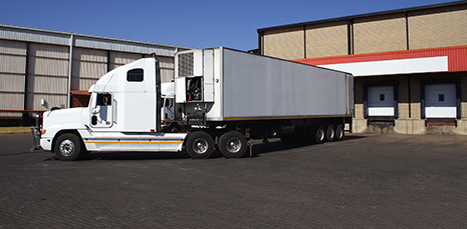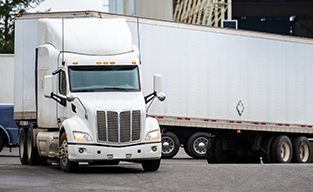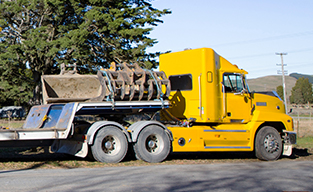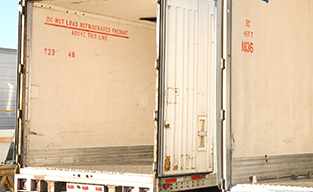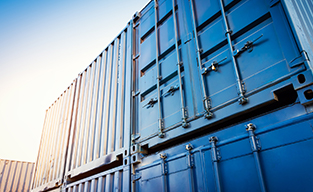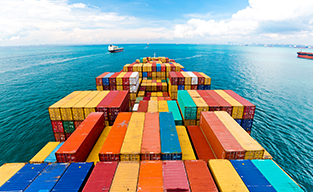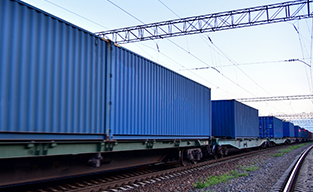What is the difference between inbound & outbound freight
Inbound logistics and outbound logistics are two integral components of the supply chain, each with distinct roles and functions. Inbound logistics primarily involve the movement of goods, materials and resources into the supply chain. This encompasses activities such as sourcing raw materials from suppliers, procuring components, transportation planning, receiving shipments and managing inventory within an organization's facilities. Outbound logistics focuses on the movement of finished products and goods out of the supply chain to the end customer. This entails tasks like order processing, warehousing, packaging, distribution and transportation to deliver the final products to the intended recipients. Inbound logistics pave the way for materials to enter the supply chain, while outbound logistics ensure the efficient flow of finished products to customers, marking the critical distinction between these two vital facets of supply chain management.
Benefits of having efficient inbound logistics
Efficient inbound logistics offer a range of compelling benefits to businesses:
- Increased Delivery Speed: Timely and well-managed arrivals of raw materials and components expedite production processes, leading to faster response times for customer orders.
- Increased Order Accuracy: Efficient inbound logistics reduce the likelihood of errors in receiving and inventory management, resulting in accurate orders, fewer delays, less waste and improved customer satisfaction.
- Improved Movement of Goods Through the Supply Chain: Streamlined inbound logistics ensure a smoother flow of goods, reducing bottlenecks and optimizing inventory levels, which, in turn, enhances overall supply chain efficiency.
- Maximized Revenue: By lowering operational costs and improving customer service through efficient inbound logistics, businesses maximize revenue through cost savings and enhanced customer satisfaction.
- Reduced Costs: Efficient inbound logistics significantly cut transportation and storage expenses, ultimately reducing operational costs and bolstering the organization's profitability.
Inbound logistics process
The inbound freight process commonly includes the following steps:
Sourcing and Procurement
The inbound logistics process begins with sourcing and procurement, where organizations identify and select suppliers to provide the necessary raw materials, components and supplies required for production or operational needs. This step involves evaluating potential suppliers, negotiating terms and establishing agreements to ensure a consistent and reliable supply chain.
Order Placement
Once suppliers are chosen, the next step is order placement. Organizations initiate purchase orders based on demand forecasts and production schedules. This entails specifying the required materials, quantities, delivery schedules and other terms. Effective order placement is critical to ensure suppliers understand and fulfill the company's requirements accurately.
Transportation Planning
Transportation planning is a crucial aspect of inbound logistics. Organizations need to determine the most cost-effective and efficient mode of transportation to move goods from suppliers to their own facilities. This step involves selecting carriers, optimizing routes and considering various transportation methods, such as trucking, shipping or rail, to minimize costs and delivery times.
Supplier Communication
Maintaining open and effective communication with suppliers is essential throughout the inbound logistics process. This includes sharing information about inventory levels, production schedules and any changes in demand. Clear communication helps ensure suppliers meet delivery schedules, adhere to quality standards and respond promptly to any unforeseen issues.
Receiving and Inspection
Upon the arrival of goods at the organization's facilities, the receiving and inspection phase begins. This step involves physically receiving the materials, inspecting them for quality and verifying the quantities match the purchase order. Any discrepancies or damages are documented, and the materials are appropriately stored.
Storage
Received materials are stored in designated storage areas within the organization's facilities. Efficient storage practices ensure materials are organized, easily accessible and protected from damage. Proper storage also helps prevent delays in production due to misplaced or inaccessible items.
Inventory Management
Inventory management is an ongoing task in inbound logistics. It involves monitoring inventory levels, tracking usage rates and reordering materials when necessary to maintain optimal stock levels. The goal is to prevent both stockouts, which disrupt production, and overstocking, which ties up capital and storage space.
Inbound logistics KPIs
Inbound logistics Key Performance Indicators (KPIs) are essential metrics used to evaluate and measure the effectiveness of an organization's inbound logistics processes. These KPIs provide valuable insights into the efficiency and performance of supply chain operations. Some key inbound logistics KPIs include:
On-Time Delivery (OTD): This KPI measures the percentage of inbound deliveries arriving at the organization's facilities on or before the scheduled delivery date. A high OTD rate indicates suppliers consistently meet delivery commitments, minimizing disruptions in production.
Inventory Turnover Rate: Turnover measures how quickly raw materials and supplies are used in production, indicating how efficiently inventory is managed. A higher inventory turnover rate implies materials are moving efficiently through the supply chain, reducing carrying costs and the risk of obsolescence.
Lead Time: Lead time measures the time it takes for materials to be delivered from suppliers to the point of use in production. A shorter lead time improves supply chain responsiveness and reduces the need for excessive safety stock.
Our inbound logistics services
At Direct Drive Logistics, we are committed to providing a comprehensive suite of inbound logistics services to meet the diverse needs of our clients. Our range of services includes:
1. Over-the-Road Trucking: We offer reliable and efficient over-the-road trucking services for both domestic and international shipments. With our extensive network of carriers and cutting-edge technology, we ensure your goods are transported securely and on time, whether they are destined for a nearby facility or a global market.
2. Intermodal Container Shipping: For businesses seeking flexibility in inbound logistics solutions, our intermodal container shipping services are designed to seamlessly transition between various modes of transportation. This includes the use of trucks, trains and ships to optimize the movement of goods, reduce costs and enhance supply chain efficiency.
3. Rail Freight Services: Our rail freight services provide a cost-effective and eco-friendly option for long-distance transportation or bulk shipments. Leveraging the efficiency of rail transport, we move your goods reliably and economically, ensuring timely deliveries to your facilities.
4. Expedited Freight Services: When time is of the essence, Direct Drive Logistics offers expedited freight services to meet urgent shipping requirements. Our team is dedicated to expediting your critical shipments, ensuring they reach their destination swiftly and securely, minimizing disruptions to your supply chain.
Optimizing your inbound logistics with Direct Drive
Optimizing your inbound logistics with Direct Drive is the key to unlocking greater efficiency, cost savings and reliability in your supply chain operations. We understand every business has unique logistics challenges, which is why our team of experts is dedicated to tailoring solutions to align with your specific needs. By partnering with Direct Drive, you gain access to a wealth of industry knowledge, cutting-edge technology and a robust network of carriers and service providers. We work closely with you to implement best practices, streamline processes and enhance visibility across your inbound logistics operations. With our comprehensive suite of services and unwavering commitment to excellence, Direct Drive empowers your organization to meet the demands of a dynamic marketplace, ensuring materials flow seamlessly into your supply chain, and ultimately driving your business's success.
Direct drive offers:
- 99% claim free delivery record
- Independent insurance to give you ONE point of contact
- Real-time tracking
- Response times under 10 minutes due to our one-on-one personal service
Our services extend beyond inbound logistics to include:
Contact Direct Drive Logistics for information about inbound logistics services or to get a free quote.
Inbound logistics FAQs
Q1: What are the key challenges in inbound logistics?
A1: Key challenges in inbound logistics include supplier reliability, transportation costs, inventory management and communication with suppliers.
Q2: How can technology improve inbound logistics?
A2: Technology such as transportation management systems (TMS), RFID tracking and data analytics enhance visibility, accuracy and efficiency in inbound logistics.
Q3: What is the role of procurement in inbound logistics?
A3: Procurement plays a vital role in selecting suppliers, negotiating terms and ensuring the timely delivery of quality materials, all of which are critical to inbound logistics.
Q4: How can I reduce inbound freight costs?
A4: Reducing inbound freight costs is achieved through strategic sourcing, optimizing transportation routes and negotiating favorable terms with carriers.
Q5: Why is inbound logistics important for customer satisfaction?
A5: Inbound logistics directly impacts production schedules and product availability, which in turn affects the ability to meet customer demand and expectations, making it crucial for customer satisfaction.



